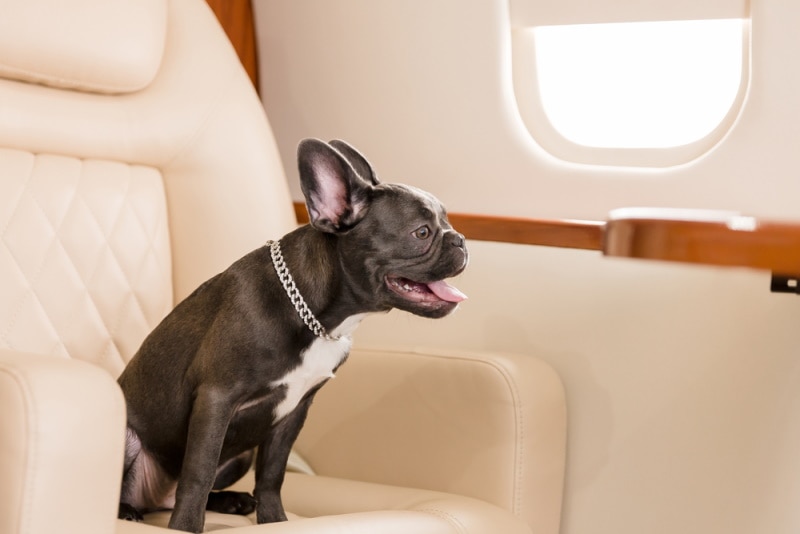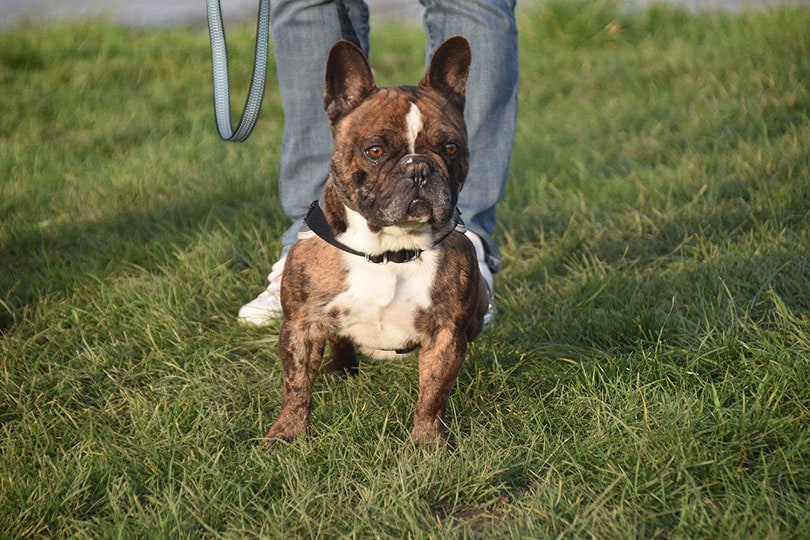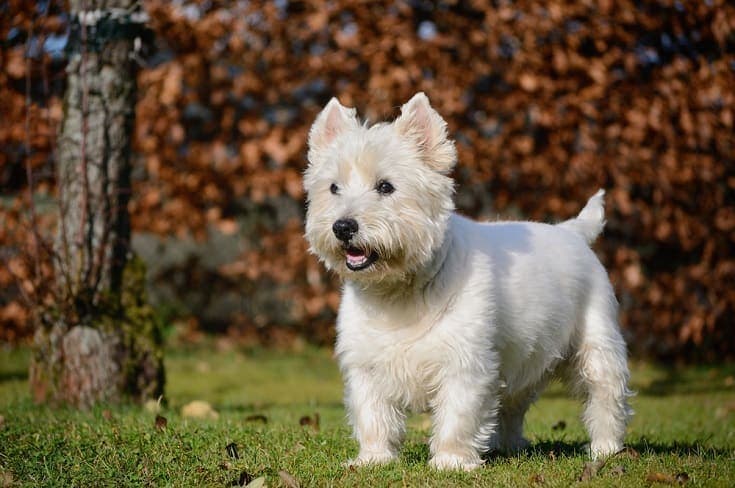Brachycephalic Dogs and Flying: Is It Dangerous for Them?
Updated on

With all the paperwork, vaccines, and extra costs of traveling with your pet, it can be incredibly stressful. If your dog is a short-snouted breed (also called brachycephalic), it can also be dangerous, even deadly, to fly with them.
Due to their anatomical abnormalities, short-snouted breeds are more vulnerable to changes in air pressure and temperature in the hold of an aircraft. Therefore, these dogs may have difficulty breathing. The added stress of travel further increases the health risks. For these reasons, many airlines have banned these dogs on their planes.
Read on to learn more about the risks of air travel with a brachycephalic dog and what options are available to you.
Why Is It Dangerous to Fly With a Brachycephalic Dog?
Brachycephalic dogs, like Pugs, Bulldogs, or Boston Terriers, have a combination of anatomical malformations that can make breathing difficult, especially in stressful situations like flying. These features include stenotic nares (malformed nostrils), an elongated soft palate, and a narrowed trachea 1.
Due to their specific morphology, short-nosed dogs have more difficulty breathing than other breeds. When they are in a stressful situation (such as during transport in the pressurized hold of an airplane) and the air circulation is inadequate, their breathing difficulties can reach a critical level, and their airways can collapse. If their oxygen supply is cut off, it can lead to overheating, collapse, and even death.
Changes in atmospheric pressure and temperature can also exacerbate brachycephalic airway syndrome, making breathing even more difficult for these dogs. Also, no one in this area of the plane is watching the animals stowed there. So, if there’s a problem with your pet, you won’t know until the plane lands.
Due to these risks, many airlines have strict restrictions for carrying brachycephalic dogs (and cats) and may refuse them on board.

Do All Airlines Prohibit Flying With Brachycephalic Dogs?
The U.S. Department of Transportation released alarming statistics in 2010 showing that short-nosed dog breeds were more likely to die on airplanes than any other breed. In fact, of the 122 dog deaths that occurred between 2005 and 2010, half were brachycephalic dogs. English Bulldogs and Pugs are the two breeds that topped this sad list.
Following this statement, many airlines around the world banned brachycephalic dogs from flying in the cargo holds of their planes.
However, a few airlines have not completely banned short-nosed dogs but have imposed strict restrictions on traveling with them. For example, Lufthansa and American Airlines allow these breeds but only in the cabin. So, in addition to fulfilling all the other necessary conditions, your dog must be small enough to travel in the cabin with you.
Tips for Flying Safely With Your Brachycephalic Dog
It is possible to fly with your short-nosed dog, but you should be aware of the risks involved and prepare well in advance.
- Find an airline that allows your dog to fly in the cabin with you so you can keep an eye on them at all times.
- Consult your veterinarian well before your trip. Ask them about the health risks for your dog and the precautions that you can take to ensure their safety and well-being during the trip. Update their vaccinations, and obtain the health certificate that may be required before any air travel.
- Make sure your dog is in good health and at a normal weight. Old, overweight, or sick animals are more at risk of suffering serious problems during air travel.
- Get your dog used to their travel crate to reduce stress while traveling.
- Unless otherwise directed by your veterinarian, avoid tranquilizing or sedating your dog before travel, as this can exacerbate their breathing difficulties.

Final Thoughts
Short-nosed dogs are adorable and endearing, but their morphological particularity predisposes them to respiratory problems. This makes them particularly vulnerable to air travel, hence the importance of educating yourself on the possible risks and consulting your veterinary team beforehand. With proper preparation, it may be possible to bring your beloved dog with you, but be sure to weigh the pros and cons carefully.
Featured Image Credit: OlgaOvcharenko, Shutterstock















